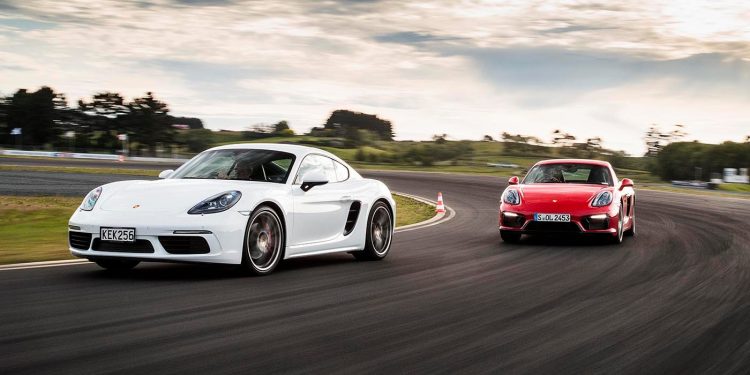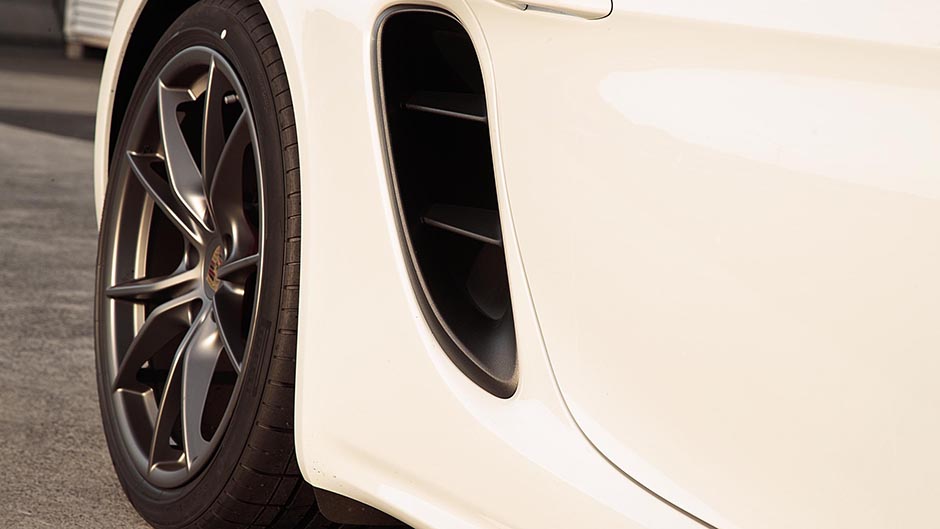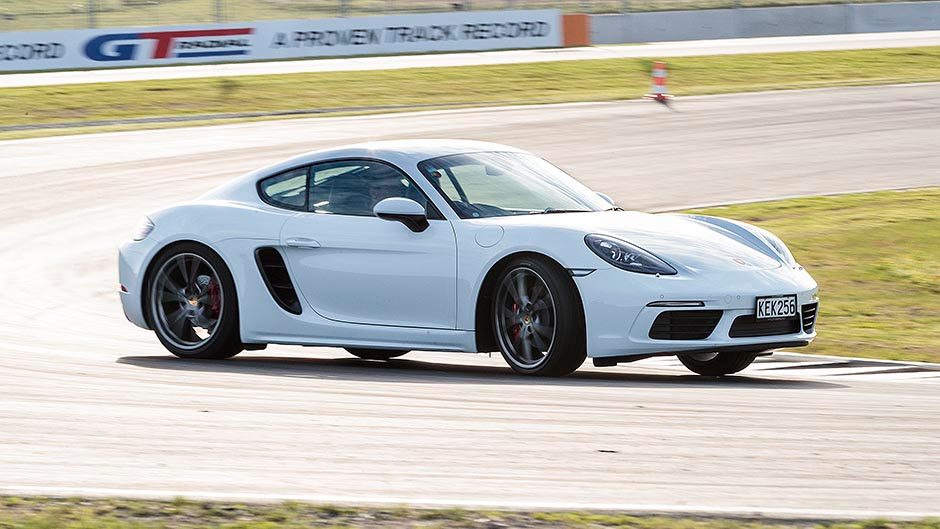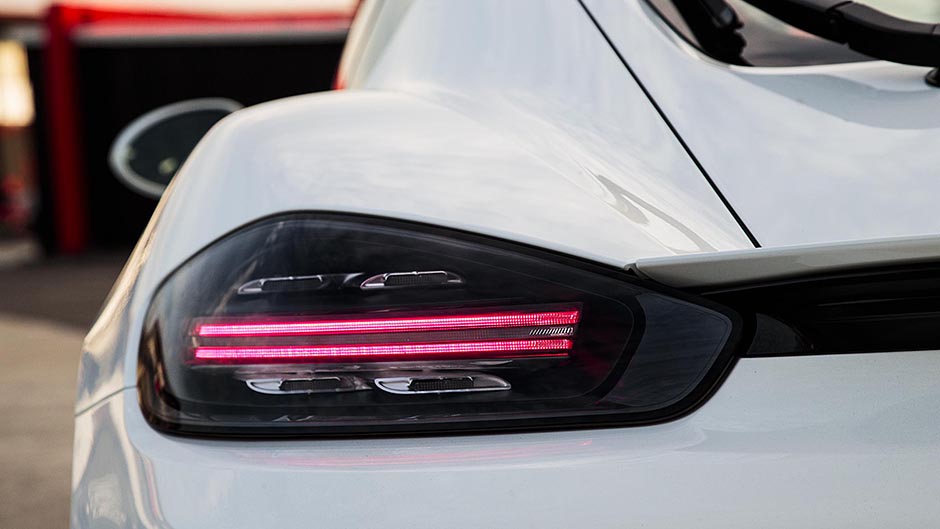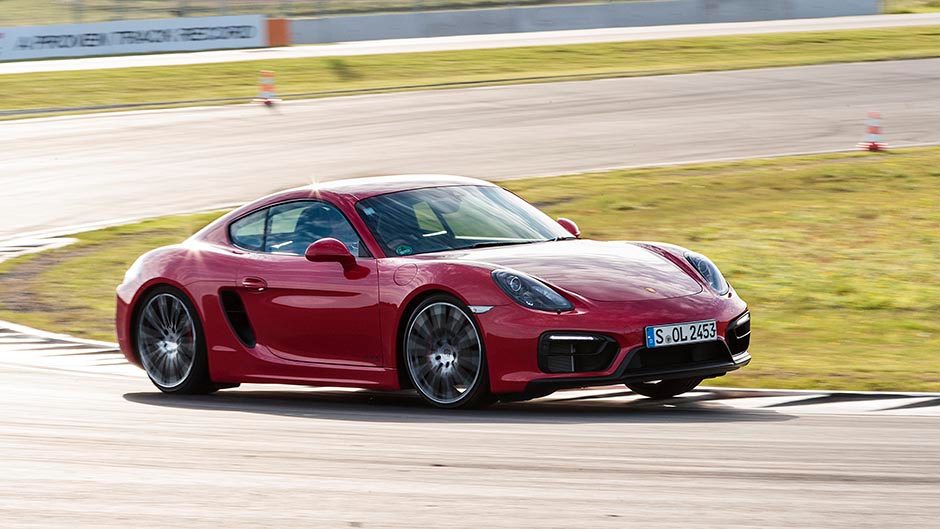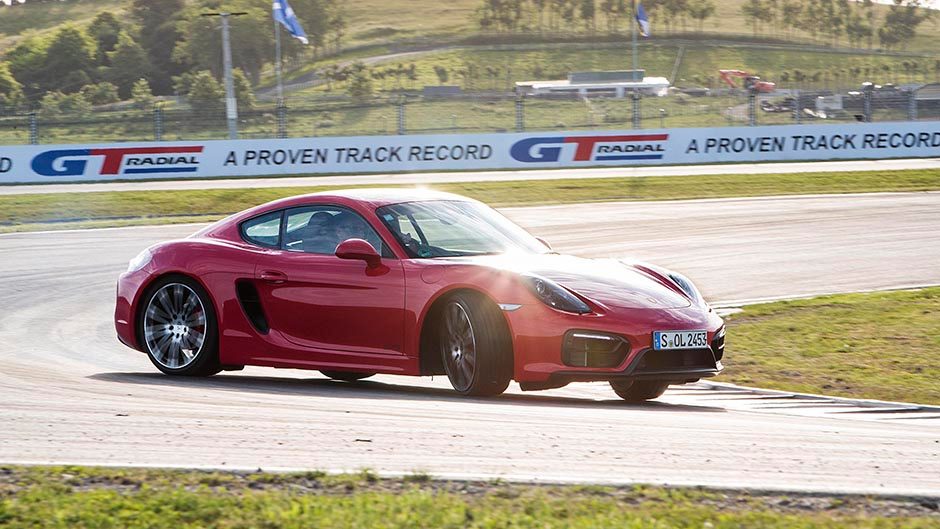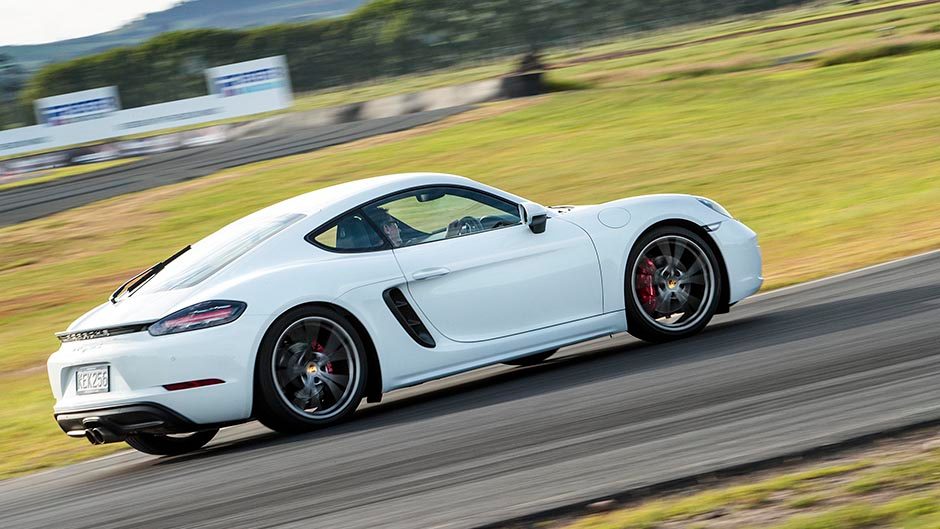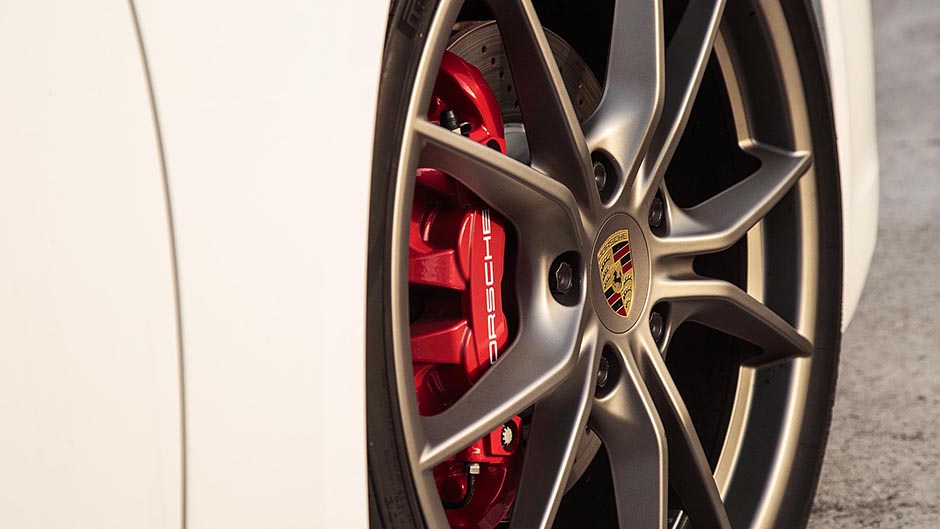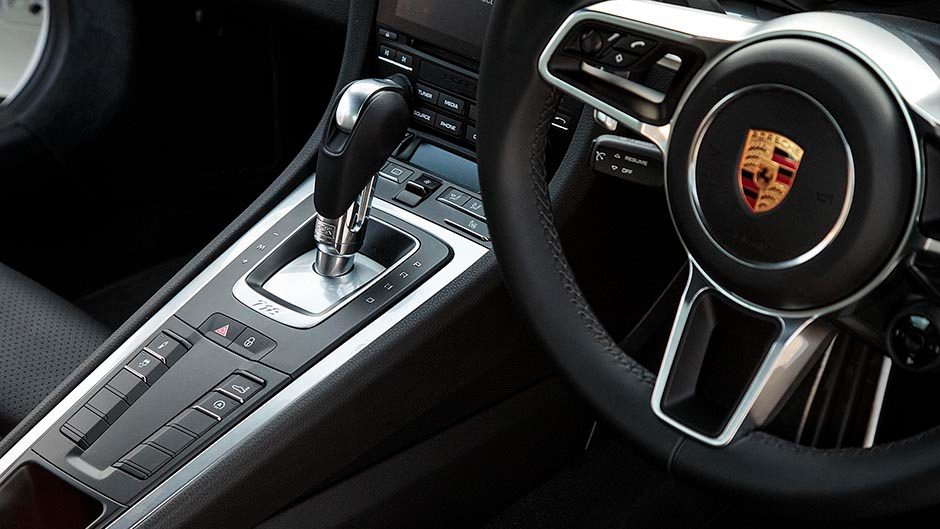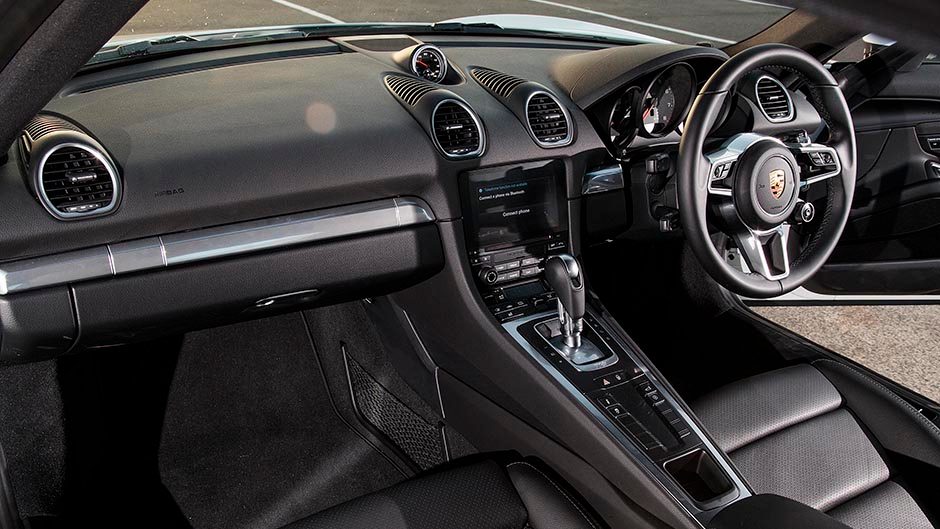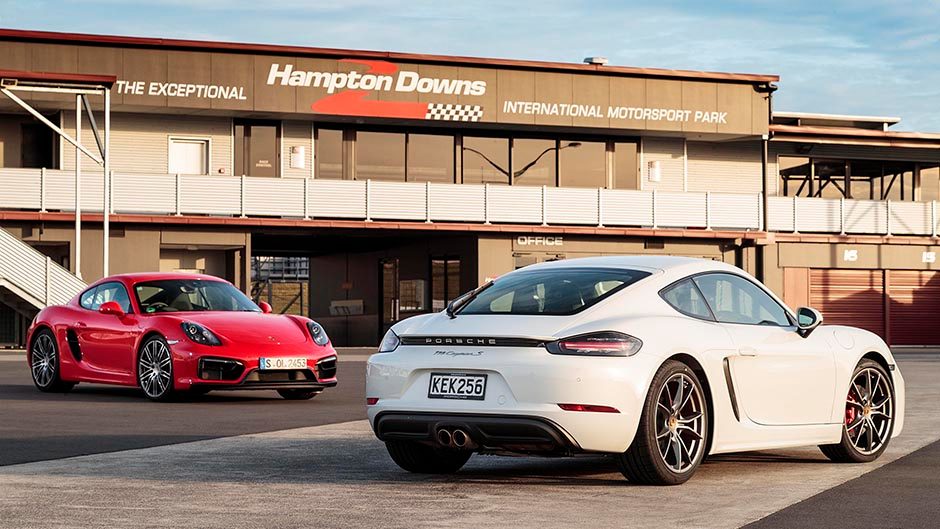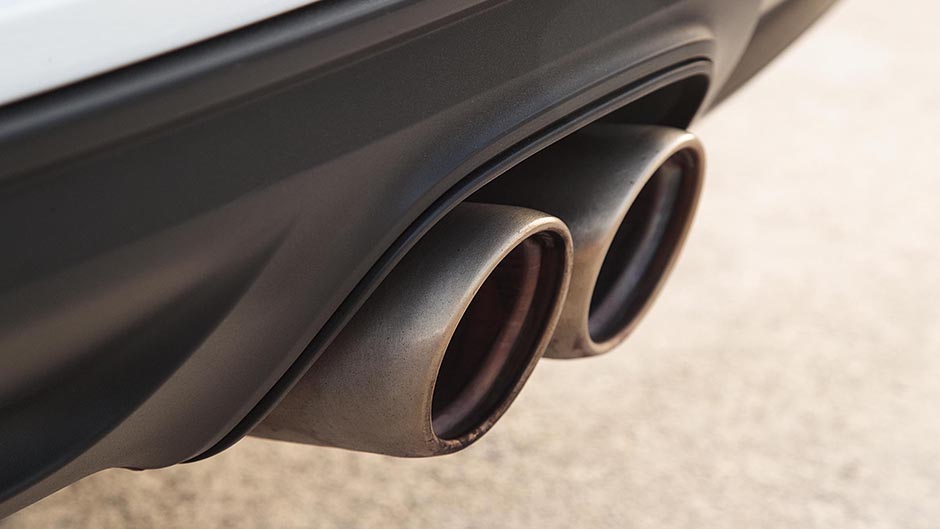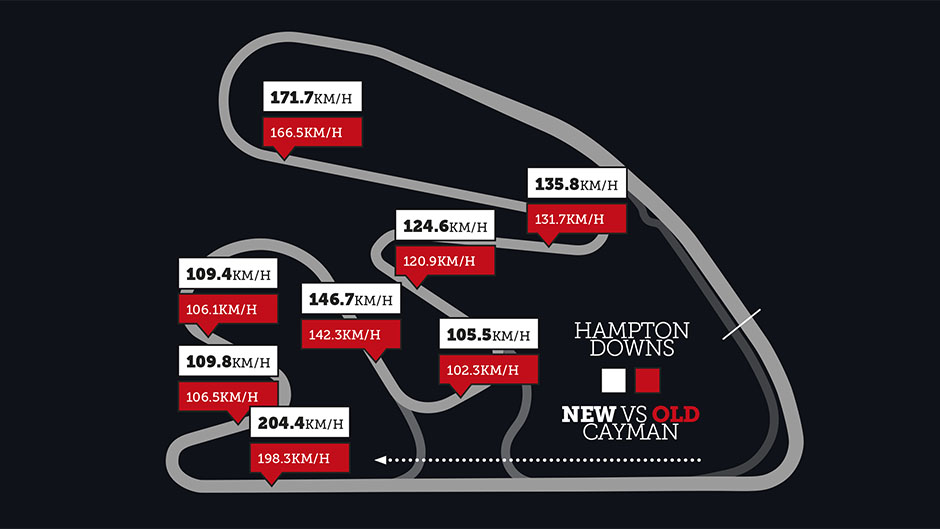2016 Porsche 718 Cayman S vs Cayman GTS track test
Words: Stu Owers | Photos: Tom Gasnier
Porsche’s evolution of the Cayman continues, now dubbed the 718, and sporting a turbocharged flat four. Stu Owers measures its advances against the old Cayman GTS around Hampton Downs
Probably one of the greatest endorsements for the Porsche Cayman came from Jim Richards. Last year, the racing legend gave up his 911 GT3 for a Cayman GT4 to compete in Targa Tasmania. He cited the Cayman’s superior chassis and its mechanical grip as his motivation. Porsche has since upped the ante with its refreshed Cayman range that’s more powerful and more economical thanks to a new four-cylinder turbo engine. Even though Porsche will never allow their engineers to build a mid-engined Cayman that will accelerate faster than it’s more expensive 911 range, the new turbo engine car has certainly narrowed the gap to the Carrera.
The recent launch of the new 718 Cayman and Cayman S neatly coincided with the Porsche factory sending out a range of its models to New Zealand for a customer driving experience at Hampton Downs. This meant we were able to organise a track session for a back-to-back comparison of the new turbo’d S and the old GTS with its six-cylinder atmo mill. And what timing, we were also able to chase a 911 Carrera S around the track in the Cayman to find out where each car gained an advantage or showed a weakness. It was a Porsche feast and we made pigs of ourselves.
Our first impressions of the two Caymans were that the old six and the new boosted four cylinder models had a remarkably similar handling feel. The new 718 has stiffer springs which always makes a car feel more responsive in high intensity handling situations. The most striking difference is how the engines sound. The old six has the same wail as a 911 that has such a long and prestigious pedigree, even if it’s intentionally detuned for use in the smaller Coupe. The new turbocharged 718 engines come in 2.0- and 2.5-litre flat-four variations with 220kW in the standard Cayman and 257 in the S. The latter also gets a variable geometry turbo to help with low down torque production and better response. Both four-cylinder variants have a pulsing offbeat idle that Subaru owners would easily relate to. The low down torque on the bigger 2.5 is even stronger and more immediate than in the old naturally aspirated much bigger six, which is a remarkable engineering feat. We were originally going to compare the old S with the new 718 S. However, the older S car got delayed somewhere along the way, but we managed upon a GTS version for our comparison testing. The GTS came out with more horsepower than the S, up to 250kW, and so was more of a match for the new turbo S.
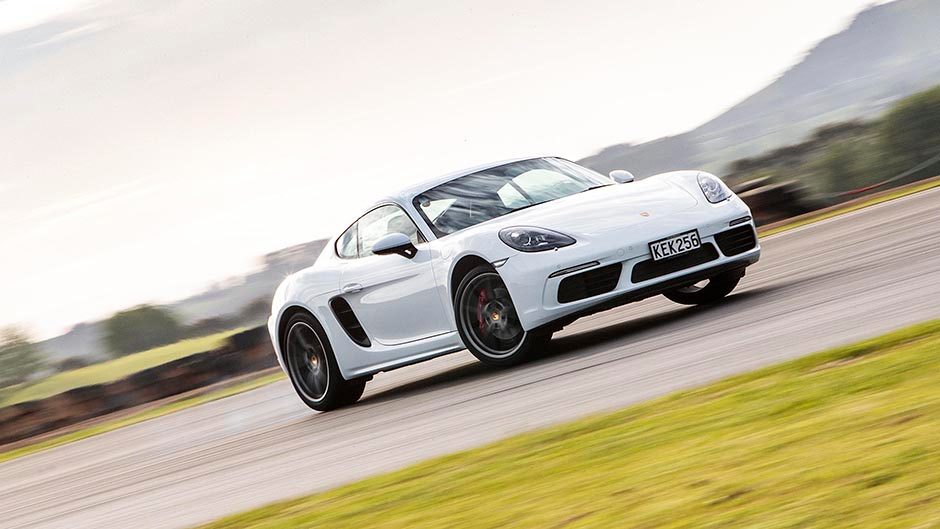
Porsche was generous with its cars, allowing us to do as many laps as we pleased, and encouraged us to go as hard as we could. So, naturally we did. It gave us a chance to push them right past their normal limits and we racked up some serious tyre wear. Pushed hard at the upper levels of adhesion, the new car is slightly more agile and lighter on its feet. The stiffer springs account for most of that improved feel. The older car has a sharper reaction if you lift off mid-corner, letting the tail step slightly wide, but it’s so easy to catch with a little bit of opposite lock. The new car still tightens the line into a corner if you lift, but it’s a softer, more refined reaction and it is even more responsive to corrective steering. When photographer Gasnier asked for a few drifting photos it was relatively easy to oblige in the red GTS but slightly trickier in the new S. Once the 718 was oversteering, it was so responsive to corrective lock, it straightened back almost immediately. Long power slides took a few attempts to master because of the car’s fantastic ability to recover and straighten itself (I know, I know, it was no fun at all). These were still quite subtle differences though. It was only when we saw the data that we realised the new car was in fact a little bit quicker everywhere on track. And this is mainly down to its stronger engine with extra torque. It’s always easy to get faster lap times by adding more horsepower, but there were also incremental handling improvements throughout.
The most fascinating laps around the track in the 718 Cayman were conducted chasing the latest 911 Carrera S. At first glance it seems an unfair comparison; the turbo six in the 911 pushing out 309kW to the 718’s 257kW. The recently enlarged Hampton Downs track configuration now has a series of relatively slow-speed corners connected by short straights. Through here, the Cayman made good ground on the faster 911. It gained on it through the entire length of the new track after Turn 2 until we got to a longer straight where the 911 could use its extra muscle to power away and recover the lost ground. But we could usually close up again under brakes. It was like we were connected with a long bungy cord. The Cayman’s mid-engined configuration lets it carry more corner speed, and exit with more momentum, making up for its lack of engine twist. Unfortunately the main start/finish straight was out of action, commandeered by Porsche’s German instructors for a coned slalom course for the amusement of the customers, so each lap was tempered by a slow cruise through the pits. That long straight would have been the 911’s chance to stretch out a lead on the Cayman. Denied of that opportunity it simply couldn’t shake its upstart junior. When we switched the order, it was fun to have the upper hand on the 911 temporarily. We could watch our lead increase through the tight twisty bits only to watch that carefully crafted advantage eroded quickly on the straights. The Cayman’s chassis balance graces it with beautifully neutral handling and lets you choose how to devour each corner either with a degree of oversteer, understeer or nicely balanced neutrality, and all simply dependent on how you exercise your right foot.

The race between the Caymans new and old was much more closely matched. We even measured out a 400 metre drag strip down the new back straight. Surprisingly, the four-cylinder turbo engine had the advantage over the bigger six cylinder almost from the moment we side stepped the brake pedal in launch control mode. The 718’s launch system seemed to allow a little more wheel spin which may be in order to get the turbo boosting nicely. By the end of the quarter mile, the little turbo motor had a lead of about a car length and a half. So imagine that repeated advantage every time you accelerate out of a corner. The handling between the two was very similar but it’s hard to argue with better outright speed. Race drivers jokingly refer to this as having better straight-line handling.
Our track map (see gallery) doesn’t have an overall lap time because we couldn’t use the main straight but the top speeds reached in each area give you most of the picture. And while the figures reached at the end of the newly lengthened back straight don’t look all that impressive, they were recorded after a standing start from the pit exit.
With so many similarities between the cars it almost comes down to whether or not you like the sound of the new four-cylinder engine because even the styling changes are subtle. But, the engine couldn’t be more different sonically from the previous six cylinder. It’s raspy and raw with a much coarser edge to it. Personally, I like its aggressive sound. I also liked the six cylinder but knowing it was purposely detuned by the factory always relegated it a 911-lite. This four cylinder mill has a character all of its own and real attitude.
So, is the new Cayman a substantial leap forward from the previous six-cylinder model? In my opinion, it’s not. The old car was already bordering on brilliant. It is, however, a definite upgrade. The new model is faster in all areas, making it more exciting and because “fast” is why you buy a Porsche in the first place, it’s therefore a superior car. Also, it’s no longer trying to be a junior 911; it’s now a proper model in its own right. It deserved to have its own engine years ago.
If you’ve thought of the Cayman and Boxster as models not to be taken too seriously, you need to drive the new 718 variants for they will quickly redefine those notions. Like other pedigree Porsches, the 718 Cayman is now designed to punch above its weight.
| Model | Porsche 718 Cayman S PDK | Price | $148,500 |
| Engine | 2497cc, flat 4, T/DI, 257kW/420Nm | Drivetrain | 7-speed twin-clutch, rear-wheel drive |
| Fuel Use | 7.3L/100km | C02 Output | 167g/km |
| 0-100km/h | 4.06sec | Weight | 1332kg |
| Model | Porsche Cayman GTS 2015 | Price | $169,000 |
| Engine | 3436cc, flat 6, EFI, 250kW/380Nm | Drivetrain | 7-speed twin-clutch, rear-wheel drive |
| Fuel Use | 8.2L/100km | C02 Output | 190g/km |
| 0-100km/h | 4.6sec | Weight | 1375kg |


